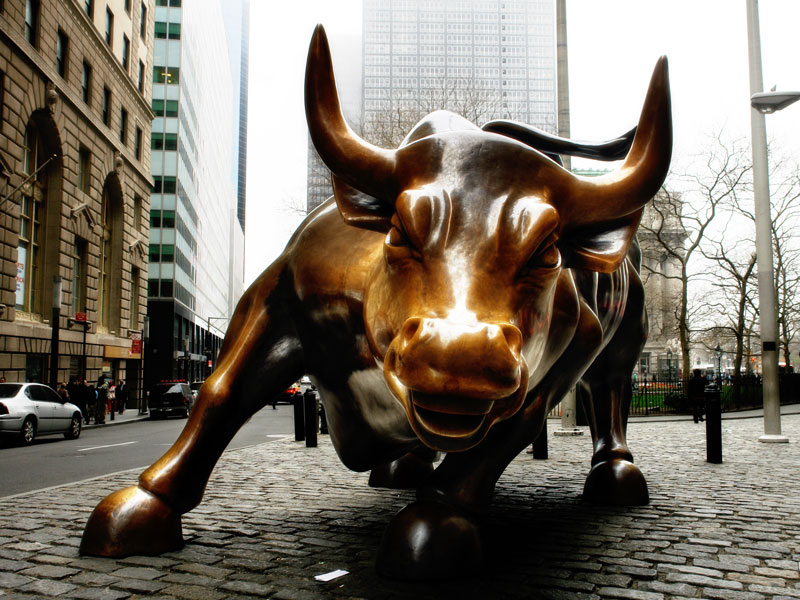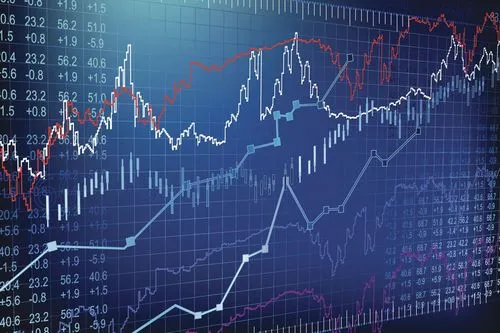Unpicking the psychology that drives stock market trends

On December 15, 1989, in the dead of night, Italian-American artist Arturo Di Modica set out to erect his latest work. With a little help from the Bedi-Makky Art Foundry, he embarked upon the ambitious task of transporting a 7,000-pound, 11-foot-tall bronze sculpture from his New York studio apartment to the very heart of the city’s financial district.
Di Modica’s Charging Bull statue has inspired veneration from tourists hoping for a cut of the riches it represents
When workers at the New York Stock Exchange arrived the following morning, they found a vast symbol of strength, prowess and unpredictability waiting for them. Since then,
The statue is also a physical manifestation of a ubiquitous Wall Street term: the bull market. Like its animal equivalent, this kind of financial climate is revered and feared in equal measure by investors. While a ride astride the bull can be a thrilling experience, it’s only a matter of time before the animal bucks – and those that fall best beware the stampede.
Unpicking the nomenclature
Extravagance and optimism are the axioms of a bull market, which occurs when stocks rise more than 20 percent from their 52-week high and continue on that upward trend. Investors enter a state of irrational exuberance, whereby stocks have risen in price for so long they believe that they will never stop rising. This then creates a self-fulfilling prophecy: investors bid prices way above the stock’s underlying value, the stock price soars due to perceived demand, and the cycle begins again. Bull markets only occur in a healthy economy, and are usually triggered by top-line revenue growth as measured by GDP or substantial profit growth by key market players.
By contrast, a bear market is categorised by caution and restraint; it begins when stock prices have fallen more than 20 percent from their 52-week high, and continues until the trend is reversed. Bear markets have occurred 32 times between 1900 and 2008, about once every three years, and typically last just over a year. Bear markets can be caused by stock market crashes, or occasionally by market corrections. While shrewd investors recognise that corrections are a natural part of any stock cycle, as they allow consolidation before the market goes on to reach higher highs, they can also trigger panic for less experienced market players, who then unwittingly send the market crashing downwards by panic selling.
Evidential proof
The endless opining as to whether the market is currently a bear or a bull can, ironically, cause it to switch from one to the other, due to the psychological phenomenon of herd mentality. This is commonly defined as the tendency for people’s behaviour or beliefs to conform to those of the group to which they belong, and is well documented among the investment community. In a bull market context, it typically stems from an assumption that others around you know something you don’t, and by not following their lead, you risk missing out on a great opportunity. Similarly, in a bear market, it’s triggered by other investors around you pulling out – you assume they have the inside track on information about a company’s future, and you decide to retract your investment too.
The term ‘bull market’ and its counterpart, the bear market, originate from an 1859 oil painting by American artist William Holbrook Beard, entitled
32
Number of bear markets that occurred between 1900 and 2008
50%+
Amount FTSE 100 recovered between January 2009 and November 2010
Within economic circles, the current state of the market and whether it will subsequently transform into either a bear or a bull is a constant source of debate. Many analysts argue that we’re currently in the longest ever bull market, which began in 2009, but it’s currently teetering on the brink: in December 2018, the S&P 500 came within two points of entering official bear territory, according to CNN. Nobel Laureate Robert Shiller told press at Davos in January that there is a very real threat of us entering a bear market in 2019; others have argued that we’re already there.










